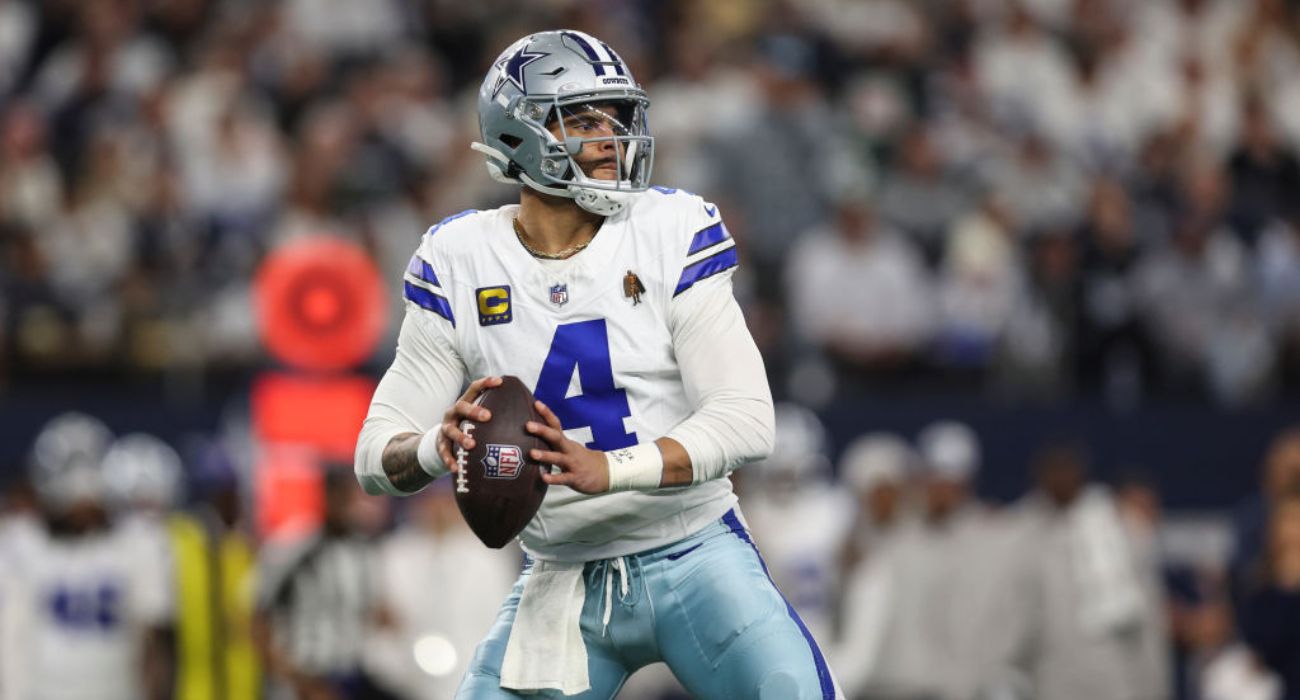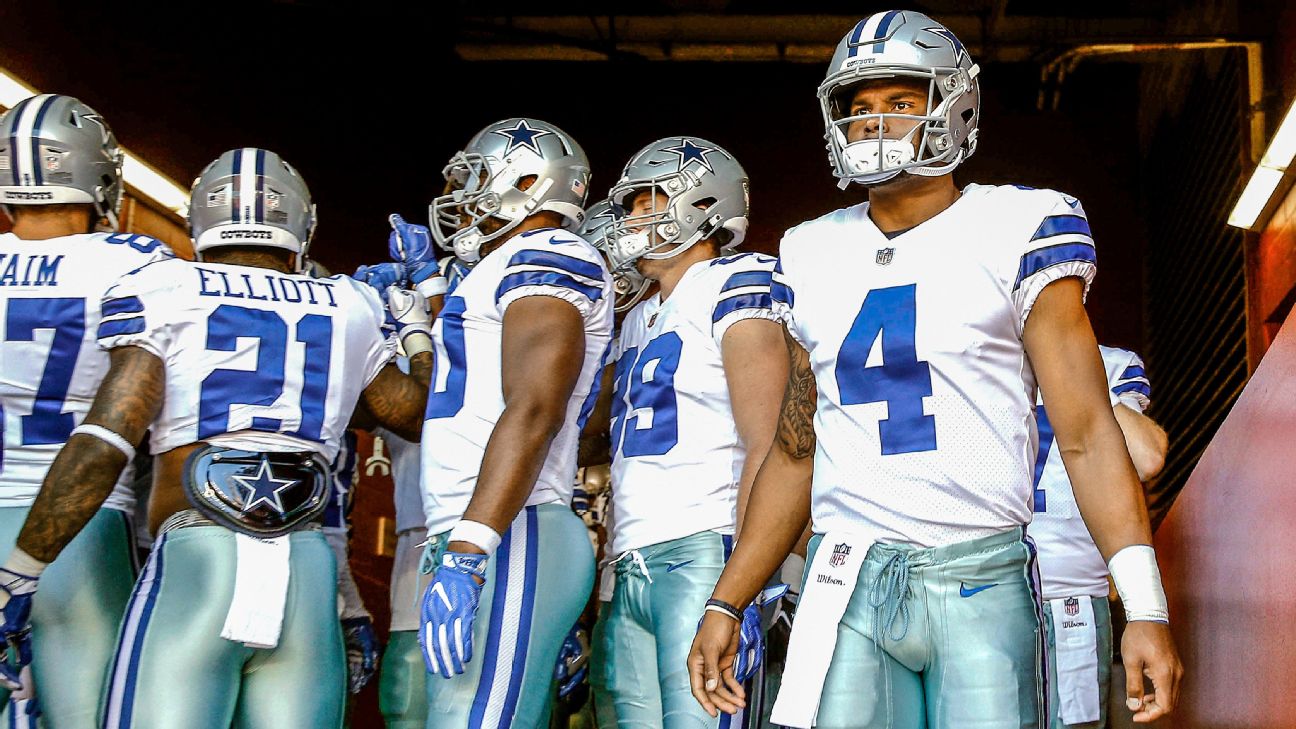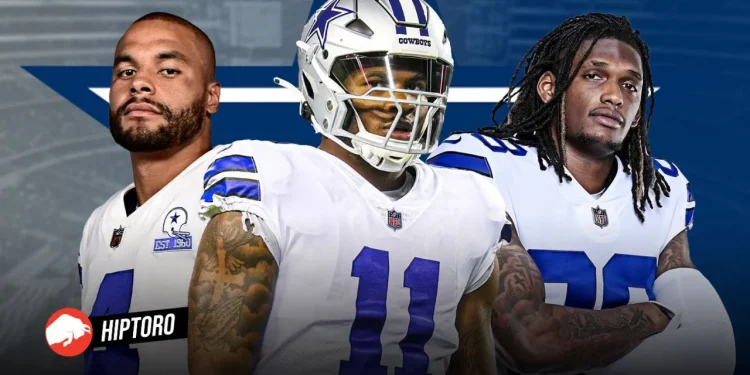Amid the financial reshuffling, the Dallas Cowboys have emerged as a focal point of media scrutiny, not for their acquisitions but for the notable names they’ve allowed to walk away. In the ever-evolving landscape of the National Football League (NFL), the announcement of the 2024 salary cap being set at a staggering $255.4 million sent waves of relief across the majority of the league’s teams. This considerable increase opened up new avenues for franchises to strengthen their squads through free agency, ushering in a period of strategic financial maneuvering.
With a meager cap space of just $2,243,253—ranking them sixth lowest in the league—the Cowboys’ fiscal strategy is under the microscope. As the league inches closer to the commencement of the new season, the question looms: How will the Cowboys navigate their financial tightrope to remain competitive in the fierce battleground of the NFC?

The Dallas Cowboys’ Conundrum: Strategy Under Scrutiny
The Dallas Cowboys’ approach to cap space management has traditionally leaned heavily on restructuring deals. This strategy, while effective in freeing up immediate funds, places a significant emphasis on the future financial implications of such moves.
Recent reports suggest the Cowboys have renegotiated with right guard Zack Martin, creating breathing room in this season’s salary cap, potentially with effects spanning into the next two seasons.
Dak Prescott’s contract looms large as another key piece in the Cowboys’ financial puzzle. The organization’s ability to renegotiate or restructure high-value contracts like Prescott’s will be crucial in their quest to assemble a competitive team without breaching the salary cap.
The Penalties of Poor Planning
The NFL’s strict enforcement of salary cap compliance introduces a high-risk factor for teams pushing their financial limits. Penalties for exceeding the cap can range from fines up to $5 million for each violation, loss of draft picks, to more severe repercussions like the voiding of player contracts.
This regulatory framework ensures teams must exercise caution and precision in their financial planning, with the offseason offering a critical window for compliance.
A $5 million roster bonus has been converted into a #SigningBonus to reduce the 2024 cap hit by $4 million, to about $55 million. The #DallasCowboys can create more salary cap relief with an extension for #DakPrescott. #NFL #MakingHistory pic.twitter.com/7c92EivLAz
— tattooed goalie dad #31🇵🇹🇨🇦 (@sandropacheco71) March 19, 2024
Looking Across the League: The Cap Space Spectrum
While the Dallas Cowboys find themselves in a precarious position, they are not alone in their financial challenges. The Washington Commanders boast the most cap room with $62.4 million, positioning them advantageously for the draft and free agency.
Conversely, the Miami Dolphins face the most acute cap pressure, currently $3.4 million over the limit, necessitating strategic decisions to realign their finances.
Teams like the Buffalo Bills, Tampa Bay Buccaneers, Cleveland Browns, and Atlanta Falcons also navigate the cap’s constraints, illustrating the widespread impact of financial management across the NFL. These dynamics underscore the fluid nature of team rosters and the continual adjustments required to maintain competitive and financial balance.

The Road Ahead
As the 2024 NFL season approaches, the Dallas Cowboys stand at a financial crossroads. The decisions made in the coming months will not only shape their roster but also test the efficacy of their strategic planning.
In the high-stakes environment of professional football, where financial acumen is as crucial as athletic prowess, the Cowboys’ journey through the salary cap maze will be a compelling saga of risk, strategy, and potential reward.

Source: Sportskeeda









